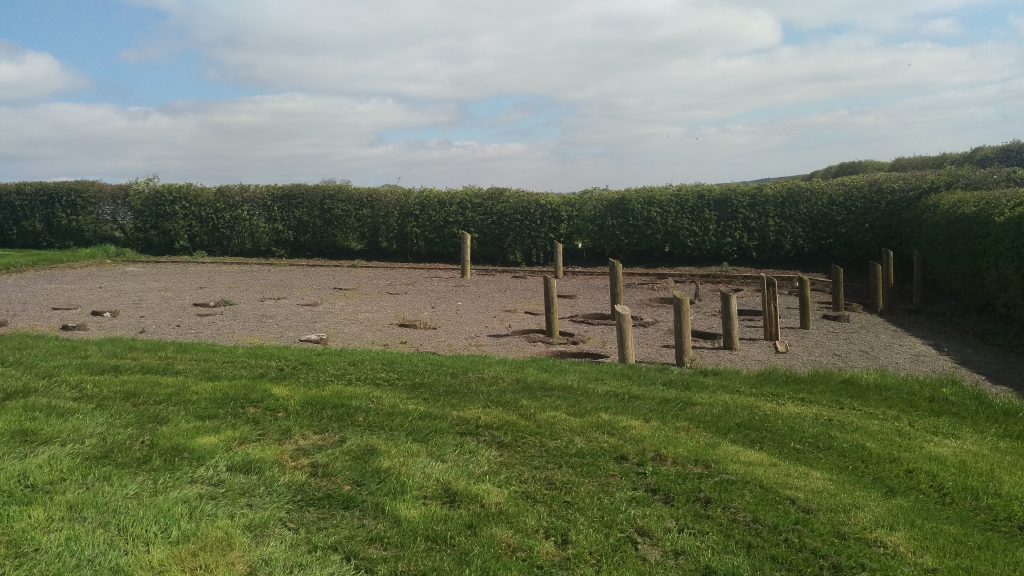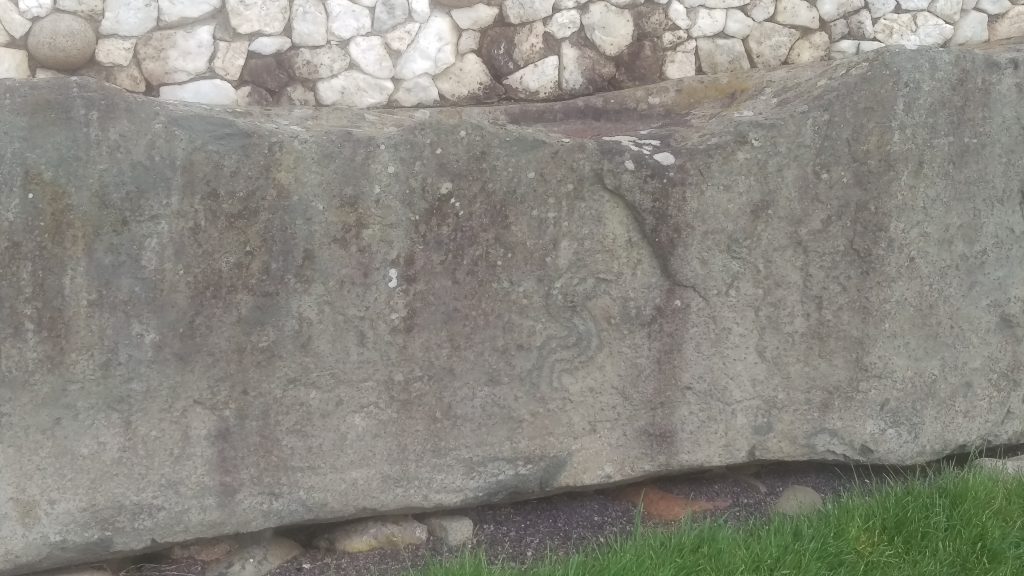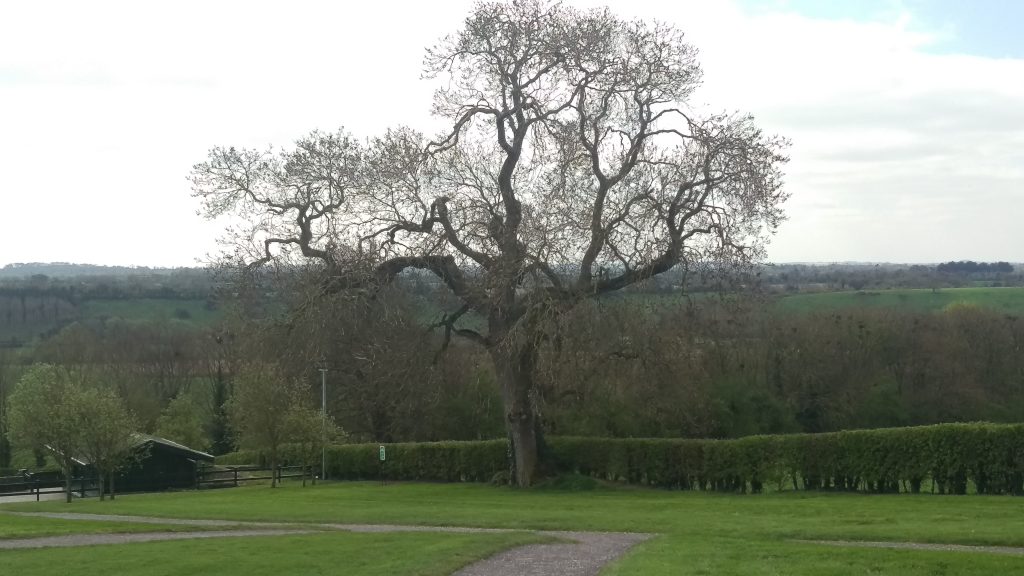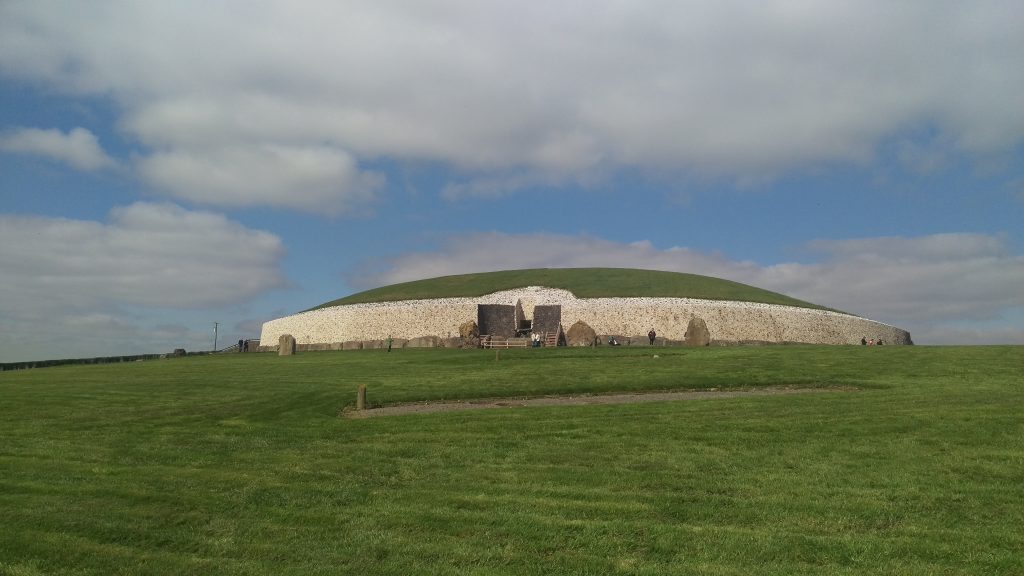After a brief hiatus, we’re happy to be back with our intrepid traveler and photographer, James Shields!
Newgrange
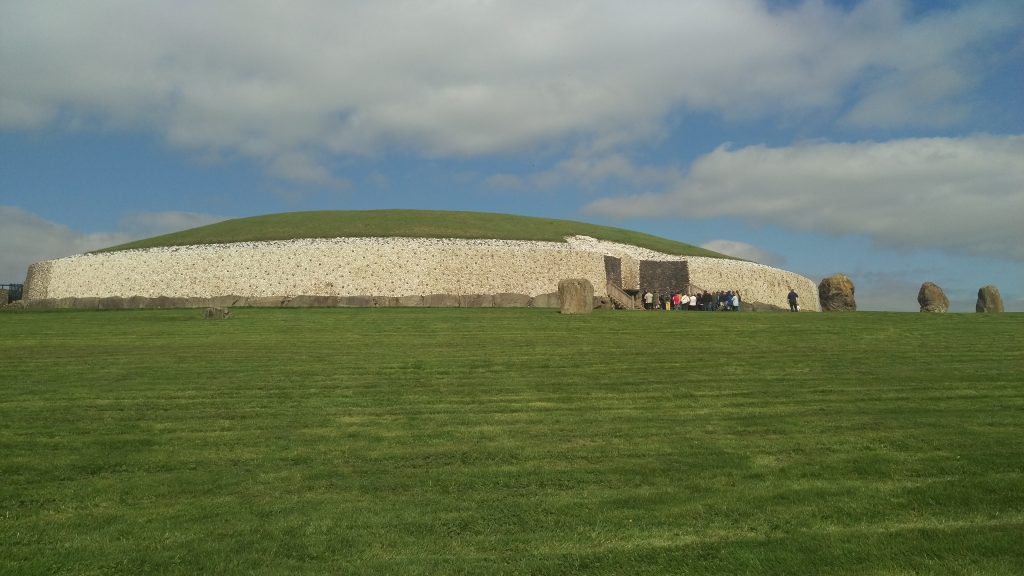
One of the most famous heritage sites in Ireland, I’ve been going to Newgrange since I was a small boy, and it’s always been an inspiration for me. At almost 5,000 years old, the site is older than the Egyptian pyramids, and one of the finest examples of a neolithic passage grave in Europe.
I live quite close by, so I always like to bring visiting friends there. This time it was my pleasure to bring Lynda Rucker during her recent visit to the country. The day was a bit dull with complete cloud cover, but at least it wasn’t raining.
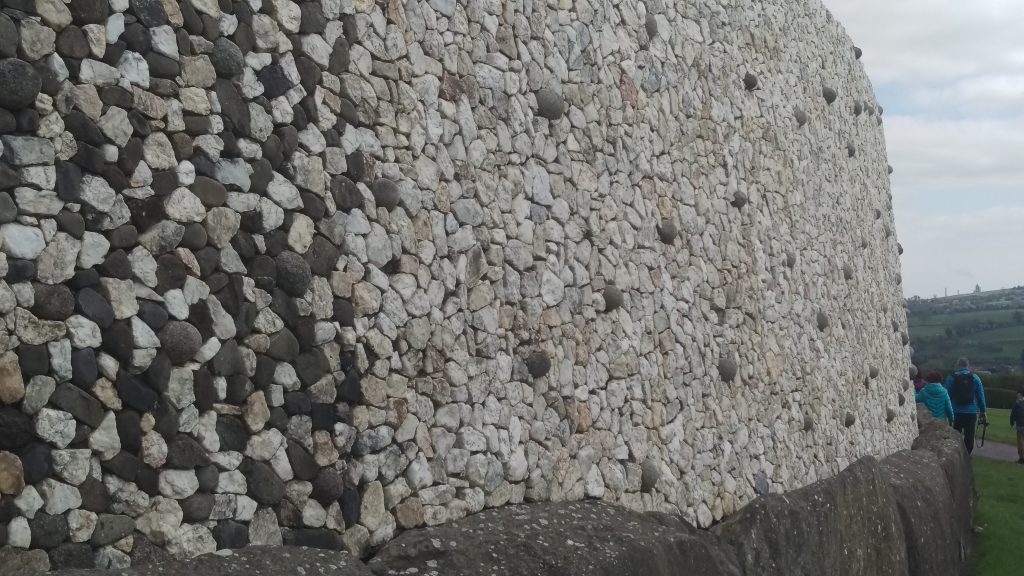
You can no longer access Newgrange directly, which is a good thing, as the roads around it are very narrow, and parking was very limited. Instead you now visit via the Bru na Boinne visitor centre, which is across the river Boyne from Newgrange.
Arriving at the visitor centre, you are presented with the choice of visiting Newgrange, Knowth or both. As time was a bit tight, and there was a tour of Newgrange departing shortly, we opted for just that. However, if you have the time, it’s well worth trying to take both in, and I’ll be sure to cover Knowth (and the third site Dowth) in future episodes. On busy days, going to Knowth first is often a good way to fill the time before a Newgrange tour becomes available.
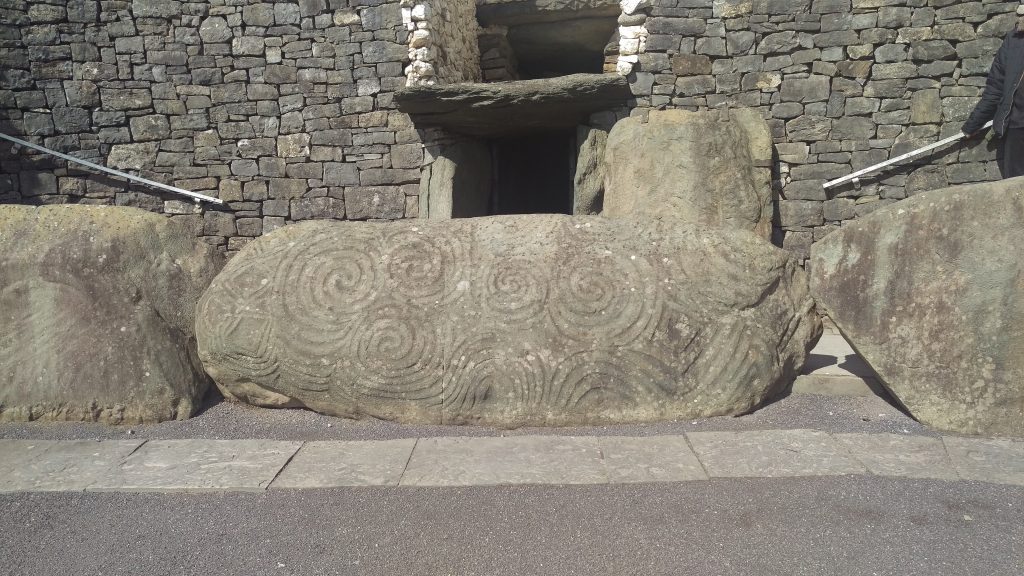
The visitor centre has a nice display on the history, construction methods and archaeology of the site, but as we were able to get on a tour almost immediately, we left that for later.
To get from the visitor centre to Newgrange, you take a short walk across a bridge over the beautiful Boyne river, and get on a minibus. This takes you to the actual monument, which takes about ten minutes.
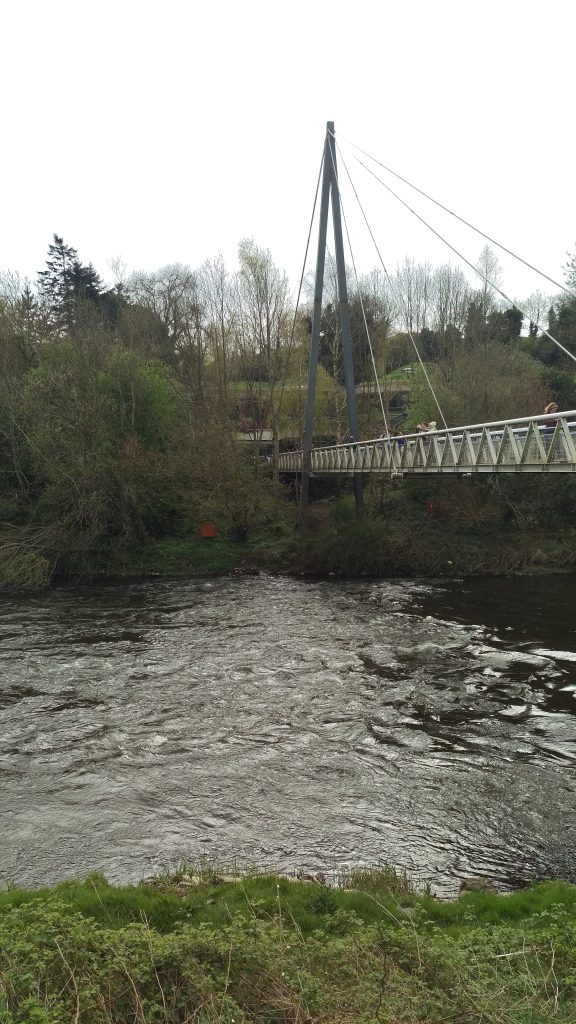
You approach Newgrange, which stands on a small hill, and it’s hard not to be impressed by the sight of the quartz lined frontage. This reconstruction is somewhat controversial, as there’s no certainty that it’s accurate and many believe that the quartz would have been on the ground around the monument rather than lining the wall.
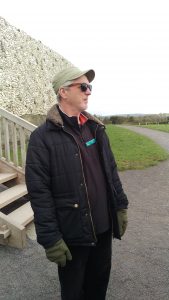
The bus dropped us off, and after a few minutes we were joined by our guide, Paul, who took us to the monument and told us a little bit of background about the people who built Newgrange and the construction techniques they used. The group then split in two, and the first half got to go inside, while our half had about fifteen minutes to look around the outside.
We spent some time looking at the large stones around the entrance, and a smaller stone circle next to them. Although most of the stones are missing, when they excavated, they found the holes that stones were placed in and put concrete markers in their place. We then walked around the main monument and looked at the “kerb stones” around the edge. These are particularly impressive considering some of them came from 80km away, and were likely brought on animal hyde boats then hauled up the hill. A number of them were decorated with beautiful carvings of spirals, chevrons and other geometric shapes.
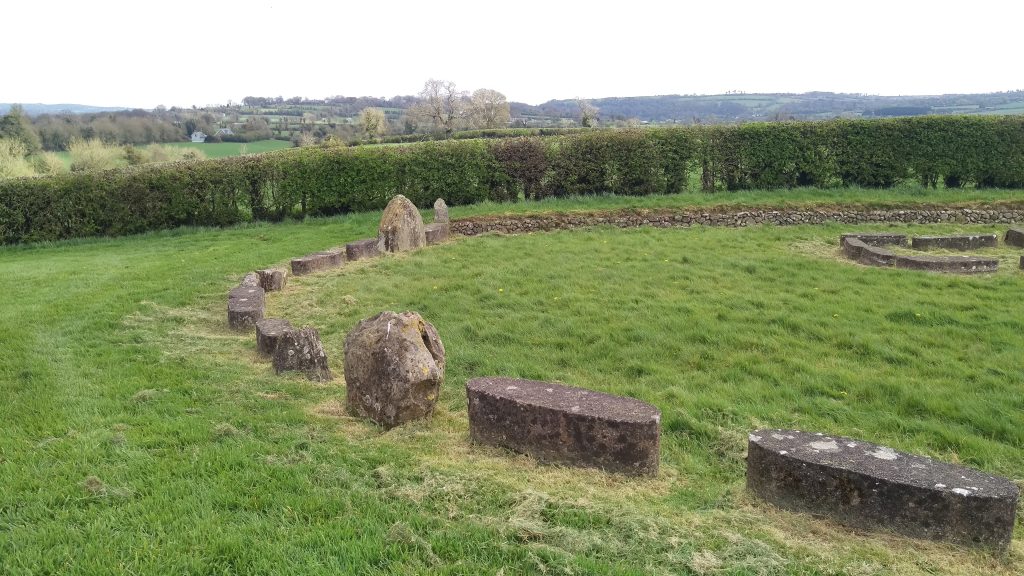
Soon it was our turn to go inside. The passage is narrow and built with short people in mind, and they advise us to remove backpacks and mind our heads. Claustrophobic people are advised to stay at the back in case they want to leave in a hurry.
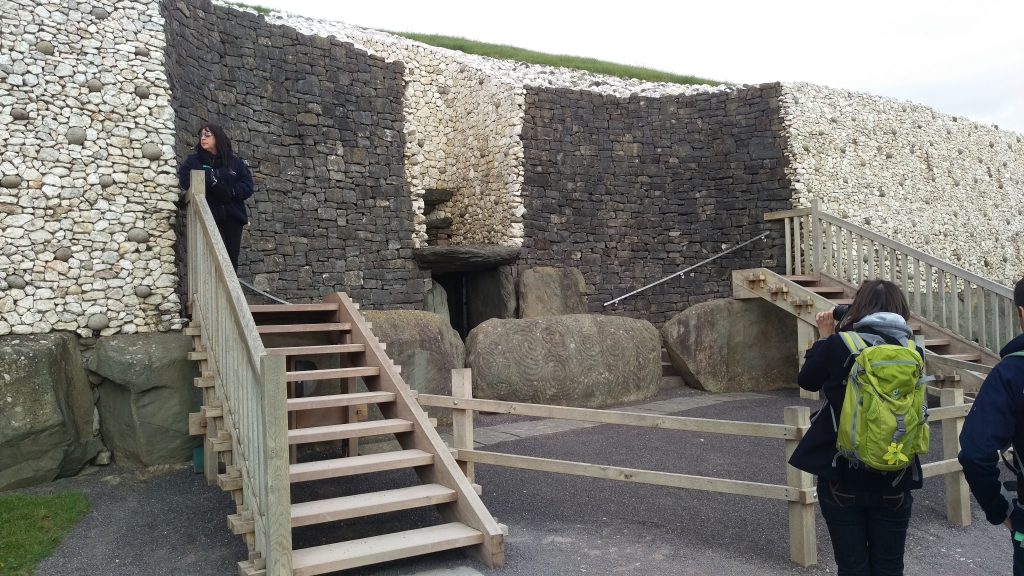
At the end of the passage, it opens into a fantastic inner chamber, over 5 metres (16 feet) tall. This is shaped like a cross, with three alcoves with “offering bowls” that were found to contain cremated human remains when the monument was excavated. Although it’s referred to as a passage grave, it’s not known whether the function was as a tomb, to inter important people, or the remains were sacrifices to appease the gods.
The inside is covered in beautiful carvings, again of geometric and abstract shapes. Unfortunately, from the time it was discovered in the 17th century to the time it was protected in the 20th, a number of people added their own carvings. They don’t allow photography inside, but I found some fantastic 360º shots of the interior here: http://www.voicesfromthedawn.com/newgrange/
It’s worth noting the construction of the inner chamber. It was made of large flat stones placed so they overlap, with smaller stones to support them, but no cement or other material holding them together. These were angled to direct rainwater away from the inner chamber, and there were even drainage channels carved on the outside. At the top, a cap stone a metre thick was placed, and the whole structure covered in a mound a further 3 metres (10 feet) thick. This has stood for five thousand years, and is still intact.
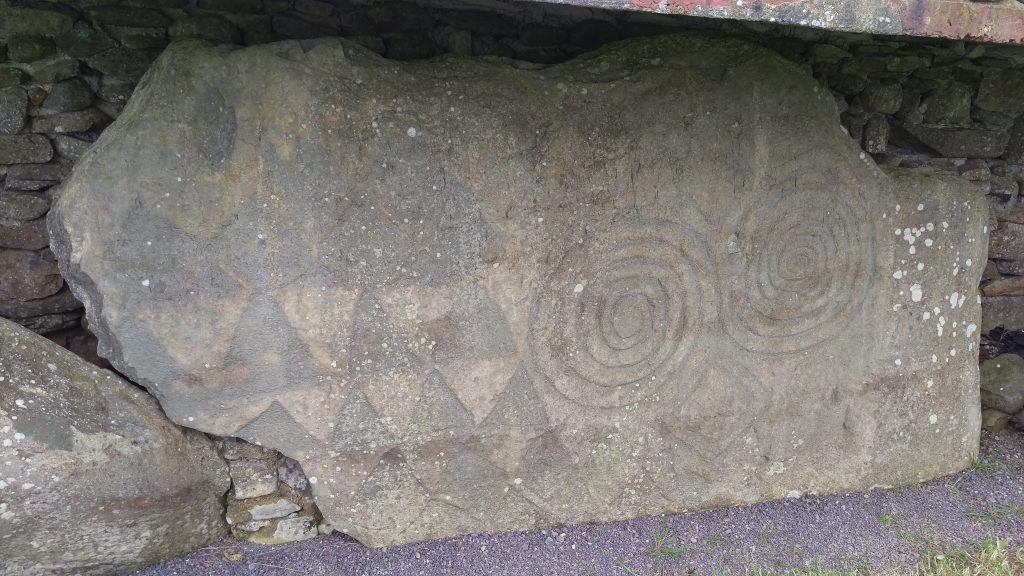
Like many passage graves, Newgrange is aligned to the sun. Different sites measure different astronomical events, and in the case of Newgrange it’s the rising sun at the winter solstice. What is unique about Newgrange is the window box over the doorway that the light comes through. As we’d walked up the passage, we’d gone uphill, so our feet were now level with the window box.
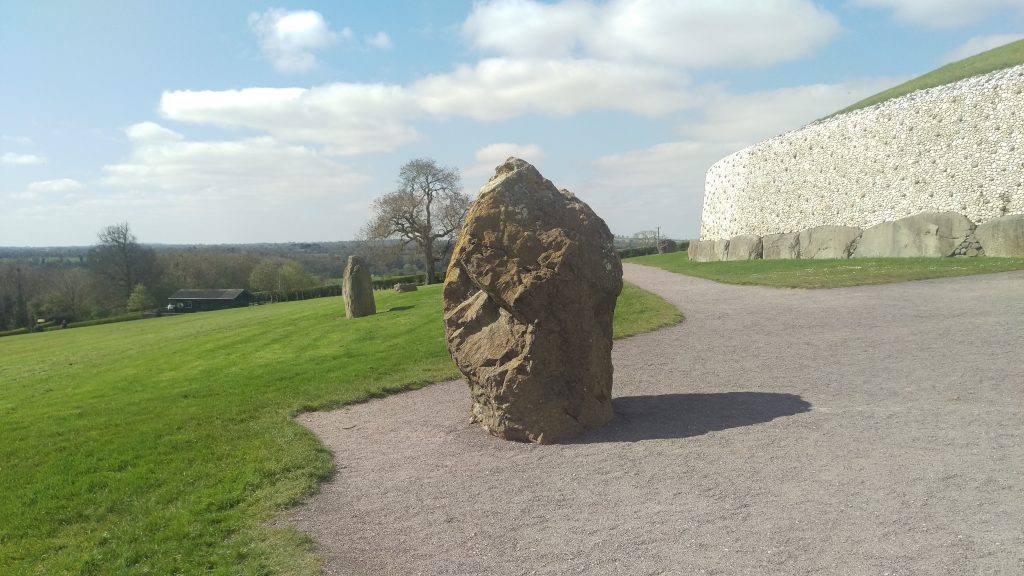
Our guide then asked us to move to leave a gap in the middle, and to let shorter people stand towards the front, so that everyone can see the floor. He then turned off the lights and the chamber was plunged into darkness, with only a tiny amount of light making it up the passageway. He then turned a series of lights on to simulate the effect of the solstice sunrise, though he commented, “it’s only a 40W bulb, so it doesn’t have anything like the intensity of the actual sunrise.”
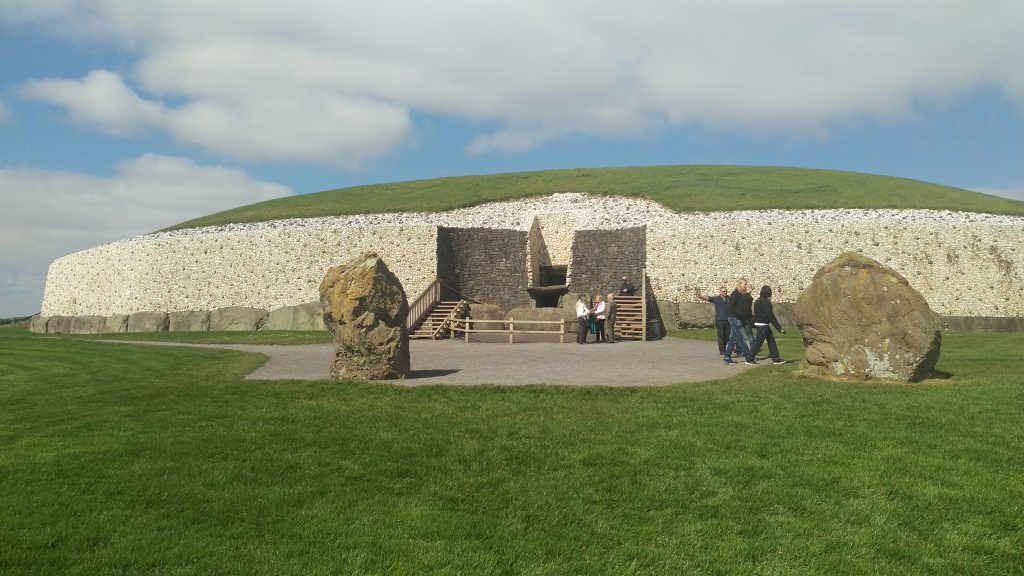
In the Celtic tradition, crossing the threshold could take you between worlds, and the archaeologists theorise that the builders of Newgrange would have had similar traditions. As we crossed the threshold back into the real world, we discovered that the cloud cover had disappeared and we were now in a beautiful Irish Spring day – a different world indeed!

